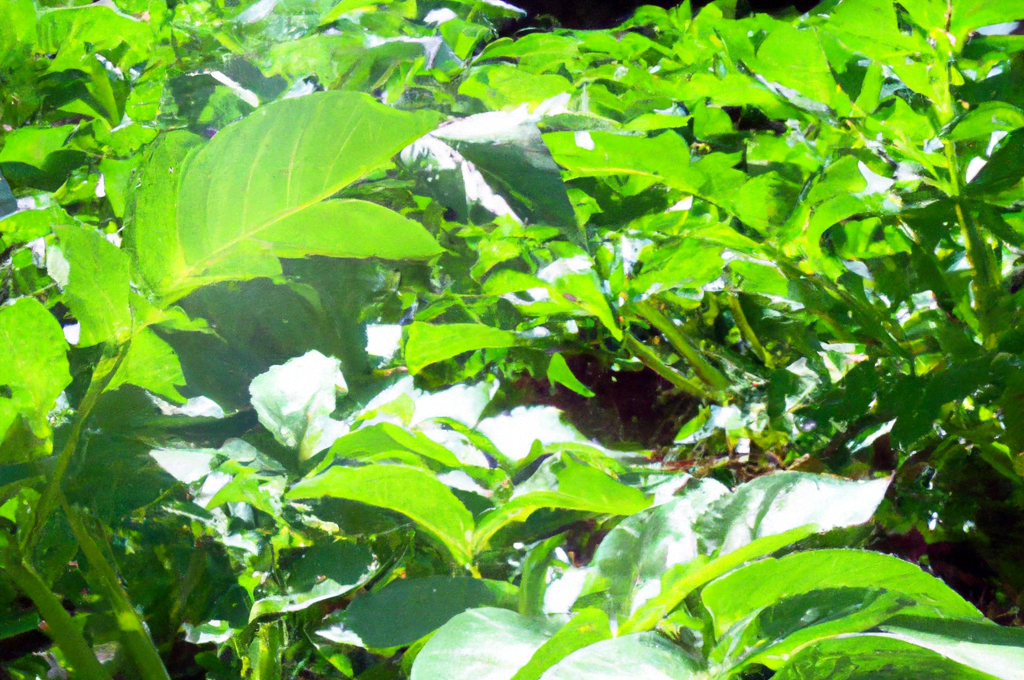Are you a potato lover with dreams of growing your own spuds? If so, you’re not alone! Potatoes are a popular crop for home gardeners, but they can be tricky to grow.
One of the most important factors for a successful potato harvest is sunlight. In this guide, we’ll explore the sun and shade requirements for growing potatoes, as well as tips for avoiding common problems and maximizing your harvest.
Are you worried about giving your potato plants the right amount of sunlight? Don’t worry, we’ve got you covered! While potatoes need a minimum of 6 hours of daylight, most crops require at least 8 hours of direct sunlight daily for optimal growth. But too much sunlight can also be harmful, causing wilted leaves and brown, watery tubers.
In this article, we’ll show you how to manage sun exposure for your potato plants and even give you tips for growing potatoes in the shade. With our guide, you’ll be well on your way to a bountiful potato harvest!
Quick Summary
- Potatoes need at least 6 hours of daylight exposure daily, but for optimal growth, they require 8 hours of direct sunlight.
- Direct full sun can dry out leaves and soil, and too much sunlight can result in light green leaves, wilted and dried up leaves, watery and brown tubers, sparse tuber formation, and green tubers.
- Draping a shade cloth over the vines and hilling potatoes can prevent extreme soil temperatures and the formation of green potatoes.
- Potatoes can be grown successfully in any USDA planting zone, and new gardeners should not be intimidated by the process.
Potato Sun Requirements
If you want to grow potatoes successfully, it’s crucial that they receive at least 8 hours of direct sunlight each day. This will ensure optimal growth and nutrient delivery to the root system. Sunlight is necessary for photosynthesis, an essential process that helps plants produce their own food and maintain their health.
Without enough sunlight, potato plants may develop light green leaves, wilted and dried up leaves, and brown and watery tubers. To avoid these problems, plant your potatoes in an area that receives continual sun exposure throughout the growing season.
However, be careful not to expose the plants to too much direct sunlight, as this can dry out the leaves and soil. If you notice signs of excessive sunlight exposure, such as sparse tuber formation or green tubers, try draping a shade cloth over the vines and keeping the soil moist to alleviate extreme soil temperatures.
Managing Sun Exposure
To manage the amount of sunlight your potato crops receive, you should aim to provide them with at least 6 hours of daylight exposure per day while avoiding extreme soil temperatures and damage to the leaves. Direct full sun can dry out leaves and soil, and too much sunlight can lead to light green leaves, wilted and dried up leaves, and watery and brown tubers. To avoid these issues, draping a shade cloth over the vines can be beneficial. This cloth can buffer plants from harsh midday sunlight and alleviate extreme soil temperatures.
In addition to avoiding too much sunlight, it is important to be aware of the risks of solanine toxin. Any light on a tuber produces solanine, which can make the potato taste bitter and make you ill. Green potatoes are especially high in solanine, so it is crucial to avoid exposing them to any light. Hilling potatoes can create a barrier between the sun and the root, preventing the development of green potatoes. By managing sunlight exposure and avoiding solanine toxin, you can ensure a healthy and plentiful potato crop.
| Sunlight Exposure | Effects | |
|---|---|---|
| 6-8 hours of direct sunlight | Optimal growth, larger and more plentiful tubers | |
| More than 8 hours of direct sunlight | Can dry out leaves and soil, lead to light green leaves, wilted and dried up leaves, and watery and brown tubers | |
| Less than 6 hours of daylight exposure | Minimum requirement, may result in sparse tuber formation | |
| Any light exposure on a tuber | Produces solanine toxin, which makes the potato taste bitter and can make you ill | , so it is important to store potatoes in a dark place. |
Growing Potatoes in Shade
You can still grow potatoes even if you have limited direct sunlight in your garden. All you need is a shade cloth to buffer the plants from harsh midday sunlight. With this, you can grow this tasty tuber and create hearty meals for your family.
One thing to note is that tuber formation may be sparse in shady areas. To help with this, make sure to use a shade cloth that allows enough light to reach the plants. Additionally, hilling around the base of the plants can help create a barrier between the sun and the roots, preventing any damage to the tubers.
With these simple steps, you can successfully grow potatoes even in shade.
Frequently Asked Questions
How deep should I plant my potato seeds?
Planting depth is important for successful potato seed germination. Plant seeds 4-6 inches deep in loose soil. Germination time is around 2-3 weeks. Ensure soil is moist but not waterlogged.
What is the best soil type for growing potatoes?
For growing potatoes, use well-draining soil with a pH of 5-6.5. Add in organic matter to improve soil composition, and water regularly to keep the soil moist but not waterlogged. Avoid overwatering, as it can lead to rot.
Can I grow potatoes in containers?
Yes, you can grow potatoes in containers. Ideal conditions include well-draining soil, regular watering, and at least six hours of sunlight. Container options include bags, buckets, and pots. Be sure to hillyour potatoes to protect them from the sun.
How often should I fertilize my potato plants?
To ensure optimal growth, fertilize your potato plants every two weeks with organic fertilizers. Avoid common mistakes like over-fertilizing and using synthetic fertilizers. This will promote healthy growth and increase yield.
How do I know when my potatoes are ready to be harvested?
To harvest potatoes, wait until the plants have died back. Then, carefully dig around the plants and remove the tubers. Let them dry in the sun for a few hours before storing them in a cool, dry place. Use proper harvesting techniques and storage methods to ensure your potatoes stay fresh and safe to eat.









